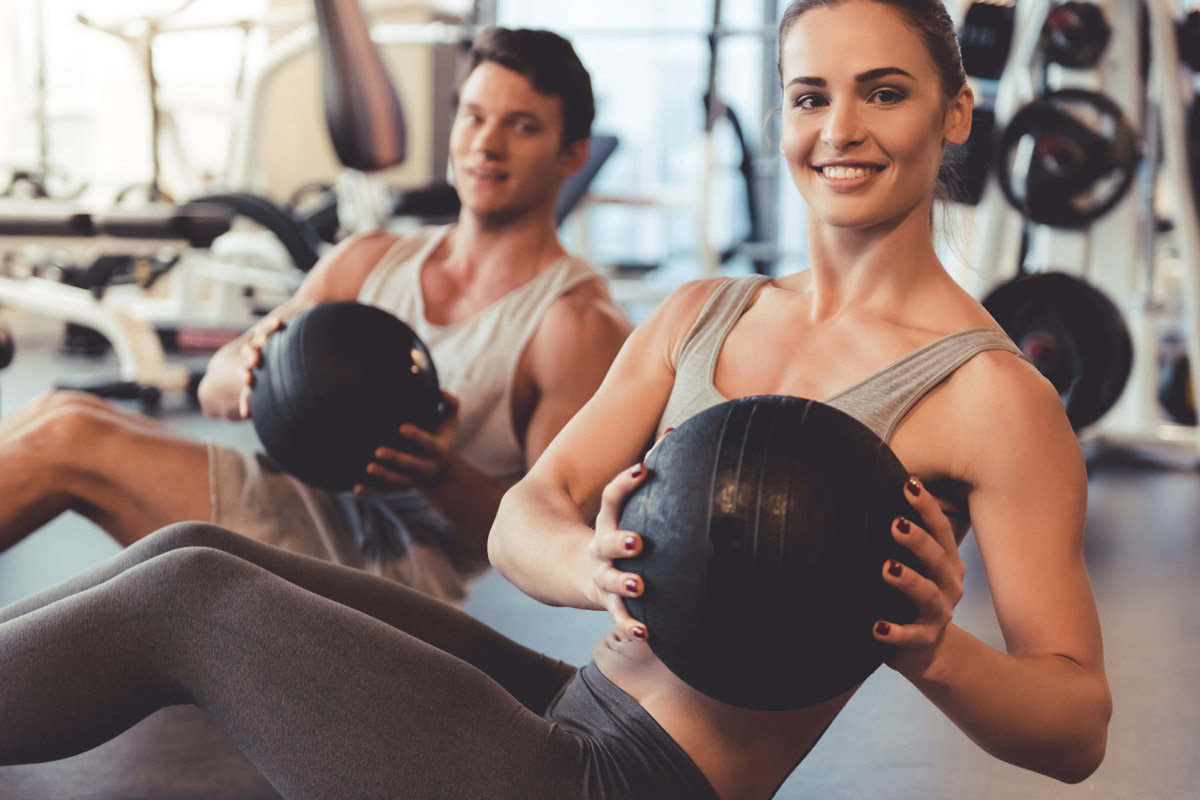
No Gender Bias Here!
A 2010 article1, found the benefits of High-Intensity Interval Training (HIIT) are similar in both men and women. The experimental study tracked male and female subjects as they conducted a series of 6 HIIT sessions over a period of 2-3 weeks. VO2max (maximal oxygen consumption) increased by approximately 5.9% in men and 6.8% in women. Peak Anaerobic Power (the ability of the adenosine triphosphate and phosphocreatine energy pathways to produce energy) increased by roughly 10.6% in men and 9% in women, while Mean Power increased by 10.4% in men and 10.9% in women. All these improvements were significant changes from pre-workout levels, independent of gender. Similarly, Respiratory Exchange Ratio (RER), the ratio between the amount of oxygen consumed and carbon dioxide produced in one breath, was found to have beneficial impacts for both genders. RER was reduced in males by 1.7% and by 2.5% in females, representing the enhanced fat oxidation effects from the exercise regimen. Much like the results from an earlier study2 where just 7 HIIT sessions over 2 weeks increased VO2max and induced marked increases in capacity for fat oxidation in women, the findings here are impressive. Similarly, 6 weeks of HIIT were found to improve health markers in sedentary females, as documented in a 2013 article in the American Journal of Preventive Medicine3. Resulting gains were sensational, with an average 18% increase in Anaerobic Performance, a 10% increase in Mean Power, and a decrease in body fat.
The research is clear, numerous different modes of exercise and variations of HIIT protocols have found significant improvements in key health indicators for both active and inactive people, independent of gender.
Other studies have supported these findings, with several experimental investigations showing the beneficial effects of HIIT across both active and inactive men and women. One article4 found significant improvements in aerobic capacity and endurance performance in active and inactive males following 8 weeks of HIIT training 3 times per week. While inactive subjects exhibited higher degrees of change, active subjects achieved greater maximal values. This should not be surprising as inactive individuals typically start with significantly lower baseline values and thus while the magnitude of change is greater, overall values still lag those of the more active group. VO2max increased by 7.6% in active males and 13.7% in inactive males. In comparison to the prior study, this one witnessed greater changes, perhaps a result of the longer training program (8 weeks vs 3 weeks).
1. Astorino TA, Allen RP, Roberson DW, et al. Adaptations to high-intensity training are independent of gender. Eur J Appl Physiol. 2011;111(7):1279-1286. doi:10.1007/s00421-010-1741-y.
2. Talanian JL, Galloway SDR, Heigenhauser GJF, Bonen A, Spriet LL. Two weeks of high-intensity aerobic interval training increases the capacity for fat oxidation during exercise in women. J Appl Physiol. 2007;102(4):1439 LP-1447.
3. Delahunt E, Callan L, Donohoe J, Melican R, Holden S. The Yo-Yo intermittent recovery test level 1 as a high intensity training tool: Aerobic and anaerobic responses. Prev Med (Baltim). 2013;56(5):278-282. doi:http://dx.doi.org/10.1016/j.ypmed.2013.01.010.
4. Siahkouhian M, Khodadadi D, Shahmoradi K. Effects of high-intensity interval training on aerobic and anaerobic indices: Comparison of physically active and inactive men. Sci Sports. 2013;28(5):e119-e125. doi:http://dx.doi.org/10.1016/j.scispo.2012.11.006.